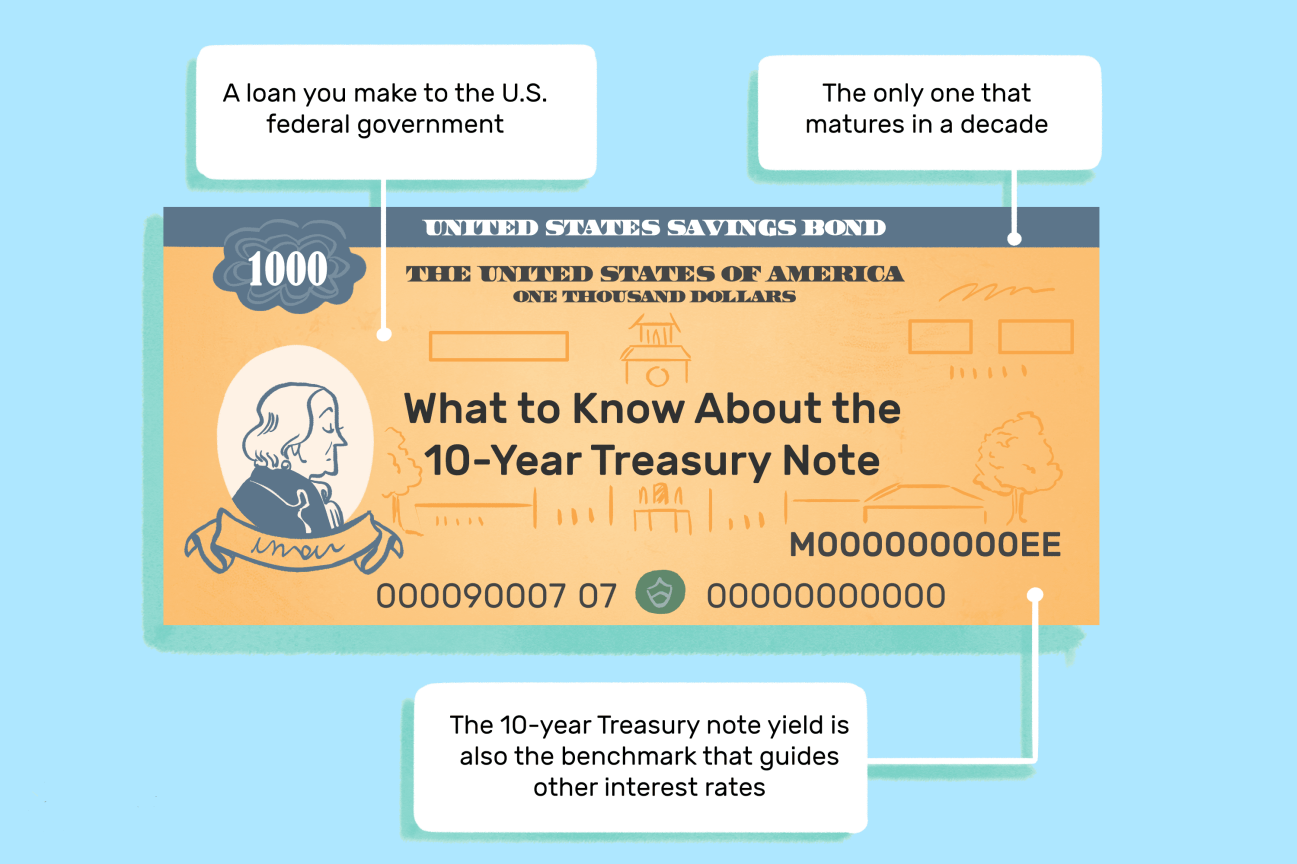What is meant by a 10-Year Treasury note?
|
T |
he 10-year Treasury note is an obligation
commitment gave by the United States government with a development of 10 years
upon beginning issuance. A 10-year Treasury note pays revenue at a proper rate
once at regular intervals and pays the presumptive worth to the holder at
development. The U.S. government to some degree subsidizes itself by giving
10-year Treasury notes.
Understanding 10-Year Treasury Notes
The
U.S. government issues 3 unique kinds of obligation protections to financial
backers that are characterized by the length of development, to subsidize its
commitments: Treasury bills, Treasury notes, and Treasury bonds.
Treasury or Depository charges (T-bills) have the most brief developments, with
spans as long as a year. The Treasury offers T-bills with developments of 4, 8,
13, 26, and 52 weeks.
What makes T-bills remarkable in contrast with Treasury notes or Treasury bonds is that they are given at limits to standard and pay no coupon installments. Financial backers are simply paid the assumed worth of the T-bills upon development, actually making them zero-coupon bonds.
Terms and Tracking
Treasury/Depository
notes (T-notes) are presented to 10-year terms, making the 10-year
T-note the one with the longest development. Different lengths of development
for T-notes are two, three, five and seven years. The 10-year T-endlessly notes
of more limited development, pay semiannual coupon installments and are not
zero-coupon obligation instruments. The 10-year T-note is the most broadly
followed government obligation instrument in finance, and its yield is in many
cases utilized as a benchmark for other loan fees, for example, contract rates.
Depository bonds (T-bonds), like T-notes, pay semiannual coupon installments yet
are given regarding 30 years.
The
following is an outline of the 10-year Treasury yield from March 2019 to March
2020. During this one-year time span, the yield consistently declined with
assumptions that the Federal Reserve would keep up with low loan costs and
possibly cut rates further. In late February 2020, the yield started to speed
up its decay as worries about the financial effect of the Covid pandemic
started to pointedly rise. Whenever the Fed went to crisis lengths to cut rates
by 50 premise focuses toward the beginning of March, the decay of the 10-year
yield sped up significantly further, plunging underneath the mentally
significant 1.00% level for another record low. From that point, the yield
dropped right down to a low of 0.36% prior to bouncing back.
The Advantages of Investing in Treasury Notes
A benefit of
putting resources into 10-year Treasury notes and other national government
protections is that the premium installments are absolved from state and
neighborhood personal charges. Be that as it may, they are as yet available at
the government level. The U.S. Depository sells 10-year T-endlessly notes of
more limited developments, as well as T-bills and bonds, straightforwardly
through the Treasury-Direct site by means of cutthroat or noncompetitive
offering, with a base acquisition of $100 and in $100 increases. They can
likewise be bought by implication through a bank or intermediary.
Financial backers
can decide to hold Treasury notes until development or sell them right off the
bat in the optional market. There is no base proprietorship term. Albeit the
Treasury gives new T-notes of more limited developments consistently, the new
10-year T-notes are given exclusively in February, May, August, and November
(the beginning months), with re-openings in the excess months of the year.
Re-openings are 10-year T-notes gave with a similar development dates and loan
costs as protections comparing to the beginning months. All T-notes are given
electronically, meaning financial backers don't hold genuine paper mirroring
the protections, like stocks.














